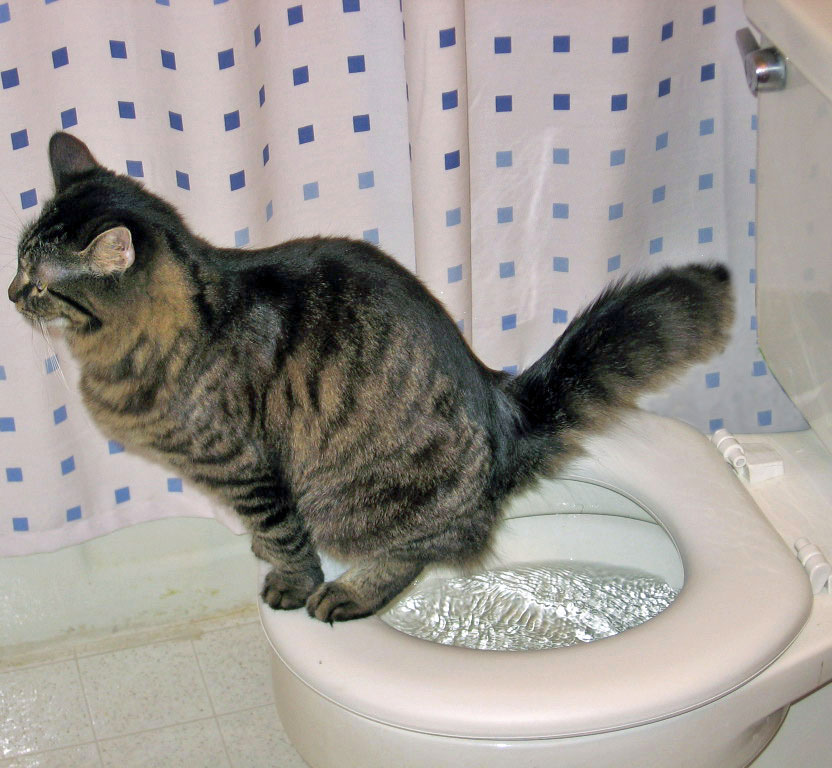The publisher is making several good points relating to How to Dispose of Cat Poop and Litter Without Plastic Bags as a whole in this article on the next paragraphs.

Intro
As pet cat proprietors, it's important to be mindful of how we deal with our feline buddies' waste. While it might appear convenient to purge feline poop down the toilet, this technique can have damaging repercussions for both the setting and human health and wellness.
Alternatives to Flushing
Fortunately, there are more secure and much more liable ways to take care of cat poop. Consider the following alternatives:
1. Scoop and Dispose in Trash
One of the most typical approach of disposing of feline poop is to scoop it right into a biodegradable bag and throw it in the trash. Make sure to utilize a specialized trash scoop and get rid of the waste quickly.
2. Use Biodegradable Litter
Select biodegradable feline clutter made from materials such as corn or wheat. These trashes are eco-friendly and can be securely dealt with in the trash.
3. Hide in the Yard
If you have a backyard, take into consideration hiding cat waste in a designated area away from vegetable gardens and water sources. Be sure to dig deep enough to stop contamination of groundwater.
4. Mount a Pet Waste Disposal System
Buy a pet dog garbage disposal system especially made for pet cat waste. These systems utilize enzymes to break down the waste, decreasing odor and ecological effect.
Health Risks
Along with environmental problems, flushing pet cat waste can also posture health dangers to human beings. Cat feces might include Toxoplasma gondii, a bloodsucker that can create toxoplasmosis-- a potentially serious ailment, particularly for expecting ladies and people with damaged immune systems.
Environmental Impact
Flushing feline poop presents harmful pathogens and parasites into the water system, posturing a substantial threat to marine ecosystems. These contaminants can negatively impact aquatic life and concession water high quality.
Final thought
Accountable animal ownership expands past offering food and shelter-- it also entails appropriate waste management. By avoiding purging cat poop down the commode and selecting alternative disposal approaches, we can lessen our environmental impact and safeguard human wellness.
Why Can’t I Flush Cat Poop?
It Spreads a Parasite
Cats are frequently infected with a parasite called toxoplasma gondii. The parasite causes an infection called toxoplasmosis. It is usually harmless to cats. The parasite only uses cat poop as a host for its eggs. Otherwise, the cat’s immune system usually keeps the infection at low enough levels to maintain its own health. But it does not stop the develop of eggs. These eggs are tiny and surprisingly tough. They may survive for a year before they begin to grow. But that’s the problem.
Our wastewater system is not designed to deal with toxoplasmosis eggs. Instead, most eggs will flush from your toilet into sewers and wastewater management plants. After the sewage is treated for many other harmful things in it, it is typically released into local rivers, lakes, or oceans. Here, the toxoplasmosis eggs can find new hosts, including starfish, crabs, otters, and many other wildlife. For many, this is a significant risk to their health. Toxoplasmosis can also end up infecting water sources that are important for agriculture, which means our deer, pigs, and sheep can get infected too.
Is There Risk to Humans?
There can be a risk to human life from flushing cat poop down the toilet. If you do so, the parasites from your cat’s poop can end up in shellfish, game animals, or livestock. If this meat is then served raw or undercooked, the people who eat it can get sick.
In fact, according to the CDC, 40 million people in the United States are infected with toxoplasma gondii. They get it from exposure to infected seafood, or from some kind of cat poop contamination, like drinking from a stream that is contaminated or touching anything that has come into contact with cat poop. That includes just cleaning a cat litter box.
Most people who get infected with these parasites will not develop any symptoms. However, for pregnant women or for those with compromised immune systems, the parasite can cause severe health problems.
How to Handle Cat Poop
The best way to handle cat poop is actually to clean the box more often. The eggs that the parasite sheds will not become active until one to five days after the cat poops. That means that if you clean daily, you’re much less likely to come into direct contact with infectious eggs.
That said, always dispose of cat poop in the garbage and not down the toilet. Wash your hands before and after you clean the litter box, and bring the bag of poop right outside to your garbage bins.
https://trenchlesssolutionsusa.com/why-cant-i-flush-cat-poop/

Hopefully you enjoyed reading our section on How to Dispose of Cat Poop and Litter Without Plastic Bags. Many thanks for spending some time to read through our piece of content. Sharing is nice. You just don't know, you may very well be helping someone out. Many thanks for your time. Visit us again soon.
Call